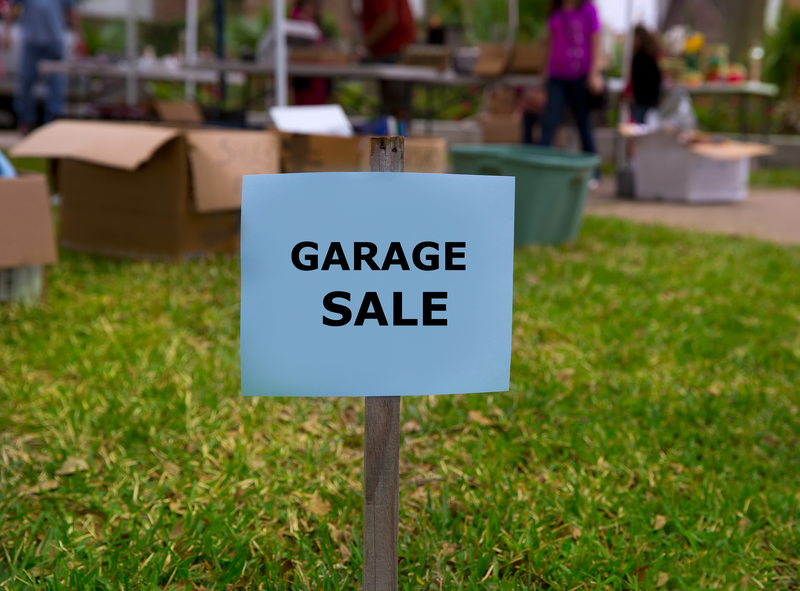A Guide to Disposing of Pots and Pans Sustainably
When kitchenware reaches the end of its lifespan, many of us face a common question: how do you dispose of pots and pans sustainably? Most households accumulate an assortment of cookware over the years, including nonstick pans, cast iron skillets, stainless steel pots, and more. However, discarding them irresponsibly can result in unnecessary waste and environmental harm. This comprehensive guide will walk you through the best practices for sustainable pots and pans disposal--helping you minimize your environmental footprint and possibly give your cookware a new life.
Why Sustainable Disposal of Cookware Matters
Disposing of old cookware is more than simply making space in your cabinets. Pots and pans made from metals, plastics, and other materials can harm the environment if they're sent to landfill. Here's why sustainable disposal is crucial:
- Environmental impact: Metals take hundreds of years to decompose, releasing toxins into the soil and water.
- Resource conservation: Recycling and reusing materials conserves energy and raw resources needed to produce new kitchenware.
- Waste reduction: Pressure on landfills is lessened when we find alternative ways to dispose of unwanted items.

Evaluating Your Old Pots and Pans
Before parting ways with your kitchenware, assess its condition to determine the most suitable sustainable disposal method. Ask yourself:
- Are they still usable? Even scratched or slightly warped pots can often be repurposed or donated.
- What materials are they made of? Identifying if they're stainless steel, aluminum, copper, cast iron, or nonstick helps inform recycling or donation options.
- Are there any hazardous coatings? Pans with Teflon or nonstick coatings require special handling, especially if the coating is flaking.
Eco-Friendly Ways to Dispose of Pots and Pans
1. Donate Your Usable Cookware
Donating old pots and pans is one of the most sustainable options, provided they're still in working condition. Your unused, but intact, cookware could serve families in need or support local charities. Consider these donation pathways:
- Charity thrift stores: Goodwill, Salvation Army, and many local thrift shops accept clean cookware.
- Food banks and shelters: Organizations supporting food-insecure individuals may welcome gently used pots and pans.
- Community kitchens or soup kitchens: They often survive on donations and would welcome functioning kitchenware.
- Online giving: Websites like Freecycle, Facebook Marketplace, and Buy Nothing groups connect you directly with people in your area who need them.
Tip: Always wash and thoroughly dry pots and pans before donating to ensure they are safe and appealing for their next owners.
2. Sell or Swap Your Cookware
If your pots and pans are in good shape, you might be able to sell them or swap them for other items. It's an eco-friendly way to extend your cookware's lifespan while making a bit of extra money or finding something you need. Try:
- Online marketplaces: eBay, Craigslist, and Facebook Marketplace.
- Local consignment shops: Some shops accept gently used kitchenware.
- Community swaps: Host or join a local swap meet and trade unused cookware for other household items.
3. Repurpose and Upcycle Old Pots and Pans
Instead of disposing of pots and pans, get creative with upcycling! These versatile household items can find a new purpose in your home or garden. Here are some inspiring upcycling ideas:
- Planters: Turn an old saucepan or skillet into a rustic flowerpot for your garden or balcony.
- Bird feeders: Use a shallow nonstick pan or lid as the base for a bird feeder.
- Wall art: Arrange lids, pans, or handles into decorative displays for your kitchen or outdoor space.
- Tool organizers: Use deep pots to organize tools, art supplies, or craft materials.
- Clock: Transform a large, round pan or lid into a funky kitchen wall clock.
Remember: Upcycling is limited only by your imagination--plus, it keeps metal and other materials out of landfills.
4. Recycling Old Pots and Pans
When your pots and pans are no longer functional, recycling is a responsible way to dispose of cookware sustainably. However, the process depends on the material and your local recycling program.
How to Recycle Metal Pots and Pans
Most cookware is made from recyclable metals such as aluminum, cast iron, copper, or stainless steel. Follow these steps:
- Check your local recycling guidelines: Not all curbside recycling accepts kitchen metalware. Many programs require you to take items to a scrap metal facility or special recycling drop-off.
- Prepare your cookware: Remove non-metal parts like plastic handles or rubberized coatings. If necessary, use a screwdriver to disassemble them safely.
- Sort by type: If you have several different materials (like a stainless steel pot with an aluminum lid), bring them separately if your recycling center requests it.
- Drop it off: Find your local metal recycling facility or scrap yard. Many accept household metalware free of charge or even pay small amounts for nonferrous metals like copper and aluminum.
What About Nonstick Cookware?
Nonstick pans have a special coating like Teflon (PTFE) or ceramic. These coatings cannot be recycled with standard metals because they contaminate the recycling stream. Here's what to do:
- Check with the manufacturer: Some companies, such as Calphalon and Tefal, offer take-back or recycling programs for their products.
- Scrap metal yards: A local scrap yard may accept nonstick pans if you can remove the coating or if they have the proper process to separate it safely.
- Last resort: If recycling isn't available, upcycling or repurposing is preferable to landfill disposal.
Special Disposal Considerations
Cast Iron Cookware
Cast iron skillets and Dutch ovens are almost indestructible. Even rusty or worn cast iron can often be refurbished--try cleaning and re-seasoning before opting for recycling. If unrepairable:
- Metal recycling: Most scrap metal yards accept cast iron due to its high value and recyclability.
- Donation: Many thrift shops and restoration enthusiasts eagerly seek vintage cast iron cookware.
- Garden use: Large cast iron pots can be repurposed as planters or outdoor fire pits.
Enamel-Coated and Ceramic Cookware
Enamelware and ceramic pots present a different challenge. While the metal core is recyclable, enamel and ceramics are not. Consider:
- Remove and recycle the metal core: If feasible, separate the metal from the coating and recycle accordingly.
- Upcycle: Broken ceramic pieces make unique garden mulch or mosaic art materials.
- Responsible disposal: If recycling or upcycling isn't possible, dispose according to municipal guidelines for ceramics.
How to Prolong the Life of Your Pots and Pans
The most sustainable option is often to use your kitchenware for as long as possible. Here are tips to extend the life of your cookware:
- Follow care instructions: Clean and season cast iron, avoid overheating nonstick pans, and avoid metal utensils on delicate surfaces.
- Repair before you replace: Handles can often be tightened or replaced. Nonstick coatings can sometimes be refurbished.
- Storage: Stack pots carefully to avoid scratches and dents.
By taking good care of your cookware, you'll reduce waste and save money in the long run.
Frequently Asked Questions About Sustainable Cookware Disposal
Can I Put Old Pots and Pans in the Recycling Bin?
Usually, no. Most municipal recycling bins accept only specific types of metals, usually aluminum cans and tin food containers. Pots and pans can jam sorting machinery and may not be processed correctly. Bring your cookware to a dedicated metal recycling or scrap facility instead.
What Should I Do With Broken Handles or Lids?
Separate lids and handles and recycle the metal parts. Plastic or glass handles may need to be discarded or upcycled separately. Lids can make great frisbees, decorative trays, or wall art if you're feeling creative!
How Do I Dispose of Cookware with Cracked Nonstick Coating?
Cracked or flaking nonstick cookware should not be donated for food use. Best options are upcycling (for non-food uses), returning to the manufacturer if recycling is offered, or taking to a scrap metal yard that accepts coated cookware.
Can I Compost Any Part of My Cookware?
No. Metal, ceramic, glass, and nonstick coatings do not break down in a compost system. Composting is only suitable for biodegradable organic material.
Choosing Sustainable Cookware in the Future
Eco-friendly cookware choices can dramatically impact your kitchen's sustainability. Here's how to make more responsible selections next time you buy:
- Choose recyclable materials: Stainless steel, uncoated aluminum, cast iron, and copper are durable and widely accepted by recycling centers.
- Avoid cheap, disposable pots and pans: Invest in higher quality, long-lasting cookware that won't need frequent replacing.
- Seek brands with recycling programs: Companies like GreenPan, Calphalon, and certain boutique brands offer take-back schemes for used products.
- Check eco-certifications: Look for brands committed to ethical and sustainable manufacturing practices.

Summary: The Best Ways to Dispose of Pots and Pans Sustainably
- Donate or give away usable cookware to extend its life and help others in need.
- Sell or swap. List your pots and pans on online marketplaces or participate in local swaps.
- Upcycle or repurpose worn-out cookware for creative home and garden use.
- Recycle at a metal recycling facility. Separate and recycle metals whenever possible.
- Avoid landfill: Only dispose of cookware in regular trash as a last resort, and never compost cookware materials.
By following these tips for sustainable pots and pans disposal, you can make responsible choices that benefit both your home and the environment. Whether you recycle, repurpose, or donate, every action you take helps reduce kitchen waste and supports a greener planet.
Additional Resources
- Find Local Recycling Facilities - Earth911
- Donate to Goodwill
- Join Your Local Freecycle
- The Buy Nothing Project
Make a positive environmental impact one pot or pan at a time! Think before you throw--adopt sustainable cookware disposal practices for a cleaner, greener kitchen and world.